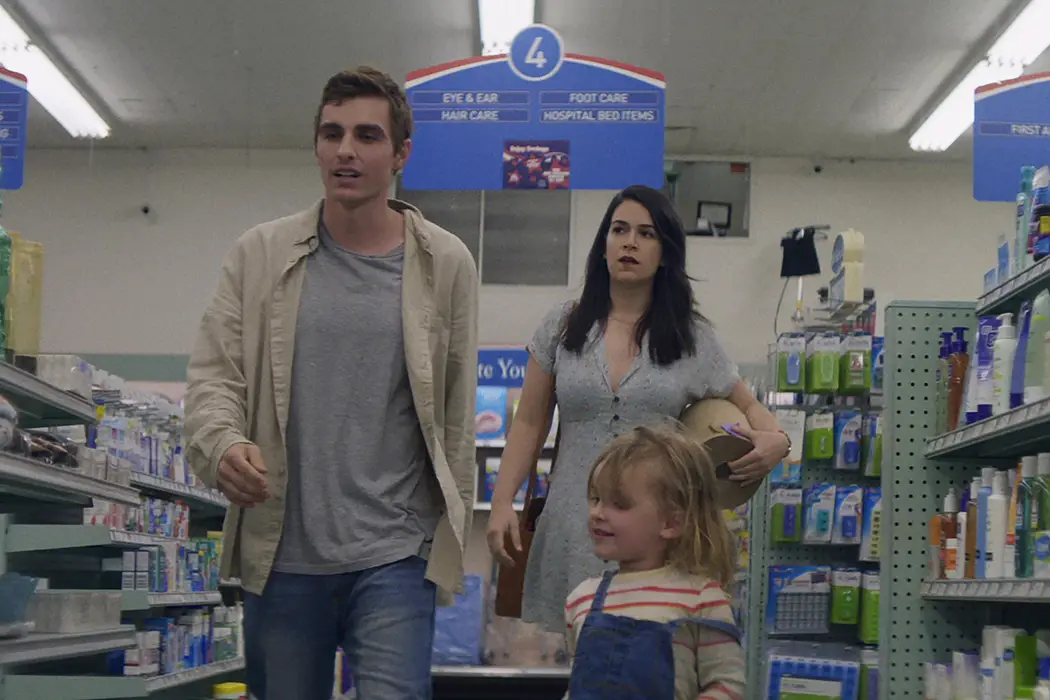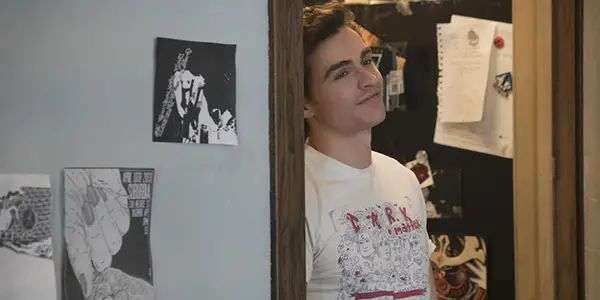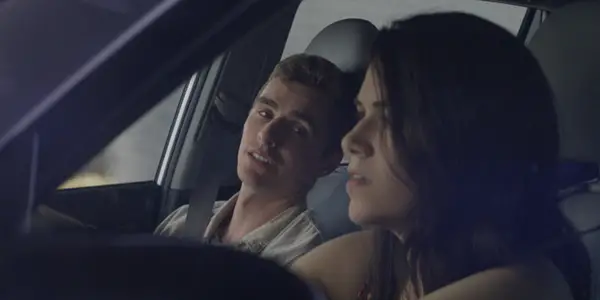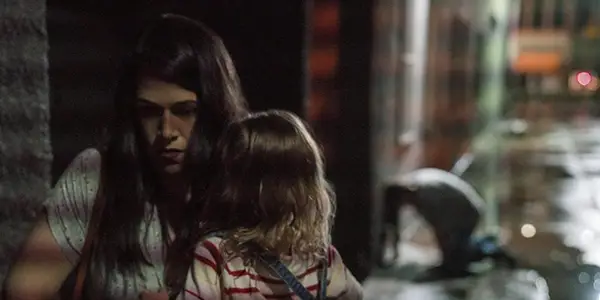SXSW Review: 6 BALLOONS: An Intimate Foray Into Crisis

Hazem Fahmy is a poet and critic from Cairo. He…
With the exception of HBO, no network or streaming giant has managed to rival Netflix’s consistency in rolling out exceptional series across spectrums of genre and tone. For some odd reason, that same model doesn’t seem have worked as well for their narrative films. Despite a fiery 2017 slate that included such critical darlings as I Don’t Feel at Home in this World Anymore, The Meyerowitz Stories, Mudbound and Okja, the phrase “Netflix Movie” continues to be used as a pejorative. Recent duds like Bright, The Cloverfield Paradox, and Mute have not helped.

On the more indie side of things, a “Netflix Movie” is often thought of as an aesthetically pleasing, but ultimately superficial small-budget film that lacks any sufficient dramatic payoff. Given the lower risks inherent to “distributing” a film on Netflix, there’s much more room for risk, but that doesn’t seem to translate to bolder filmmaking as often as it should. Thankfully, Marja-Lewis Ryan’s 6 Balloons seems to be an exception.
Odyssey of Awful
Taking place over the course of one horrifying night, the film follows Abbi Jacobson’s Katie, a woman who is forced by circumstance to drive her heroin-addicted brother Seth, played by Dave Franco, around Los Angeles in search of a detox center that will have him. To make matters worse, his two year-old tags along.
In the midst of the ongoing opioid crisis, 6 Balloons strikes a careful balance between timeliness and universality. One cannot help but think of the national discourse when watching Katie being turned away again, and again, and again. Though critical of the ways women are expected to mother the men around them, the film also extends an empathetic hand to Seth, a young man whose only obstacle to help is a broken healthcare system.

At first, it may seem hard to imagine two comic actors like Jacobson and Franco inhabit such a heavy story. But like all great comedians who turn to drama, neither of them throw away their signature styles, rather sharply redirect them to fit these new characters’ needs. This film is anything but a comedy, but it is funny. There’s a seamless familial chemistry between Katie and Seth; one feels the weight of their history, with all its turbulence and all its joy, in every moment. Some of Jacobson’s funniest moments on Broad City involve timely uses of her trademark deadpan. As a character faced with incessant cruel absurdity, Katie makes great use of that kind of reaction. Similarly. Franco’s boyish charm, the heart and soul of his performances like in 21 Jump Street, fit Seth’s manipulative, but genuinely desperate demeanor.
Despite a somewhat slow start, Ryan paces the film expertly, throwing us in the midst of the night’s tension, humor and dread. Her camera roams and shakes as the conversations peak and drop. Ryan is acutely aware of the kind of unjust emotional, and even physical, labor that is being demanded of Katie throughout the film. Before Seth showed up to her house, she was planning a birthday party for her boyfriend. By the end, she cannot even attend the very party she has thrown because she still needs to take care of her brother. It’s a grueling experience watching her, especially when she needs to be a mother to both her brother and his own daughter, a responsibility he seems incapable of doing.
Filming an Epidemic
But for all of its heaviness, 6 Balloons challenges what we’ve come to expect of dramas about drugs. There’s neither a climactic overdose nor a neat resolution. In an oddly effective way, the film isn’t really interested in what happens to Seth once the credits roll. This is largely due to Ryan’s focus on Katie. It isn’t so much a portrait of addiction as it is a portrait of what happens to the family and loved ones of those who have been claimed by addiction. There are no graphic close-ups of needles penetrating skin or cold turkey vomiting. Instead, we linger on Katie’s heartbroken face as her brother asks her to find and buy heroin for her, or when he casually shrugs off her warnings: “Only stupid people O.D.” The intimacy is devastating.

But Ryan’s boldest choice lies in the relative short length of the film. Running at a brisk 74 minutes, 6 Balloons feels concise and poignant, like it’s said all it has to say, thank you very much. I can’t help but feel that other directors would’ve felt an immense pressure, perhaps from a producer, to cram more into a story that is really only concerned with one night. The ending feels abrupt in the most effective way, refusing to give an easy out for either its characters or audience. It’s a risky choice, no doubt, but it works because it serves Ryan’s overarching tone.
6 Balloons: Conclusion
Far from the average Netflix indie, 6 Balloons is a thrilling turn for its co-stars and a promising sophomore picture for its director. It’s always refreshing to see a take on a social epidemic that doesn’t wallow in clichés of suffering, but rather examines the humanity underneath it all, and Ryan does just that. Though I left the film satisfied, I’m already hungering for these three’s next projects. Let’s hope they work together again.
In your book, which films portray addiction most poignantly?
6 Balloons screened several times during the SXSW Conferences and Festival 2018. It will be released worldwide on Netflix April 6.
Does content like this matter to you?
Become a Member and support film journalism. Unlock access to all of Film Inquiry`s great articles. Join a community of like-minded readers who are passionate about cinema - get access to our private members Network, give back to independent filmmakers, and more.
Hazem Fahmy is a poet and critic from Cairo. He is an Honors graduate of Wesleyan University’s College of Letters where he studied literature, philosophy, history and film. His work has appeared, or is forthcoming in Apogee, HEArt, Mizna, and The Offing. In his spare time, Hazem writes about the Middle East and tries to come up with creative ways to mock Classicism. He makes videos occasionally.













